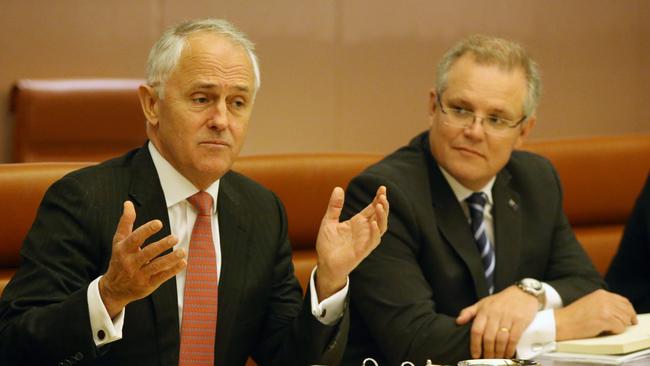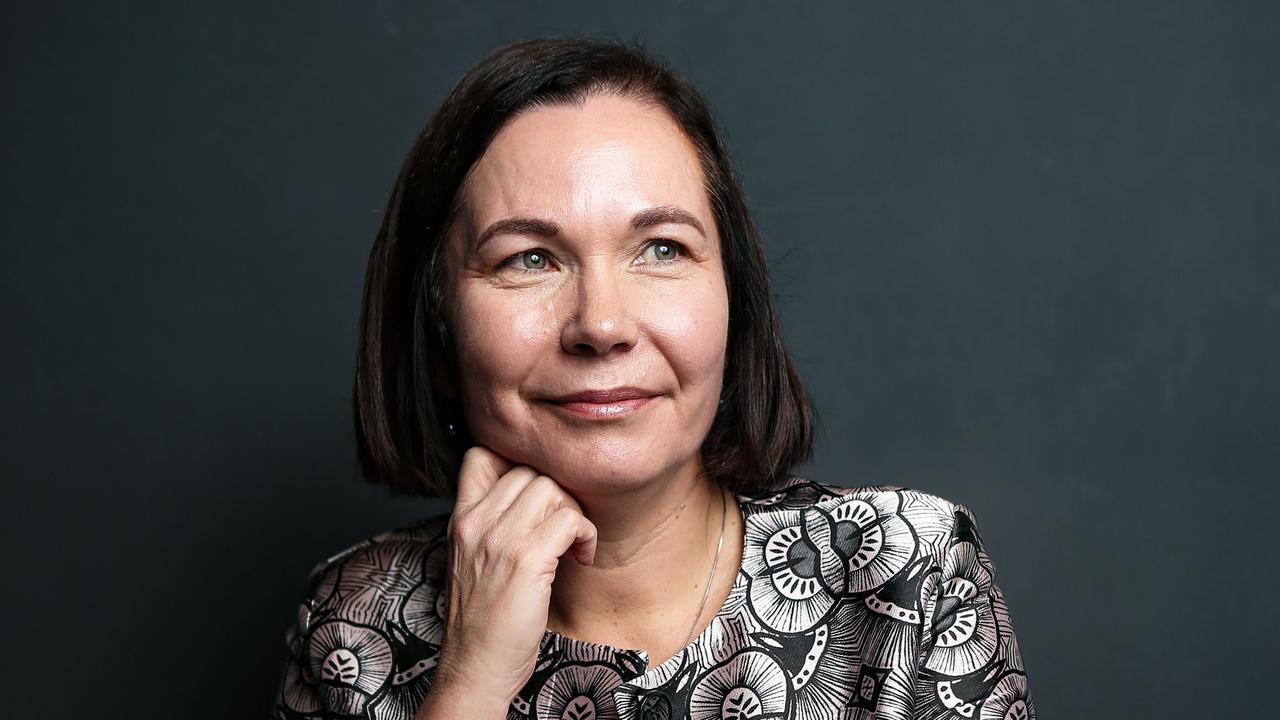Households to drive the economy in 2016
Malcolm Turnbull and Scott Morrison are banking on improvements in consumer confidence.

Malcolm Turnbull and Scott Morrison are banking on an improvement in consumer and business confidence to carry the economy through the election year as the increasingly steep downturn in commodity prices drags on the resources states.
With the government’s economic plan underpinned by consumer spending, the Treasurer told The Australian that household consumption, which makes up more than half the economy, remained strong and was a “key factor” in the year ahead.
The early signs for the consumption appear positive, with sources at the major banks reporting record transaction volumes in the Christmas period and economists confident about the outlook for reasonable spending growth.
Mr Morrison said the government’s decisions and policies over the year would be aimed at cementing the gains in confidence and avoiding anything that could act as “handbrake or undermine confidence”.
While the budget update last month had lowered forecast growth in household consumption by 0.25 percentage points to 2.75 per cent this year and 3 per cent in 2016-17, the Treasurer said this was “still positive and still very strong”.
“This will be a key factor for the economy in 2016 and afterwards, that’s why confidence has been so important,” he said. “That’s why the Prime Minister and I have been very pleased with the movements in confidence indicators in recent months, and that needs to be continually reinforced by the decisions we’re making and the policies we’re announcing.”
Mr Turnbull made Tony Abbott’s failure to maintain business and consumer confidence a pretext for his September leadership challenge. “Ultimately, the prime minister has not been capable of providing the economic leadership our nation needs,” Mr Turnbull said at the time.
“He has not been capable of providing the economic confidence that business needs.”
Mr Abbott also promised a revival in confidence would be the hallmark of his government, declaring that “Australia is open for business”. He was rewarded in the early months but confidence slumped following his first budget and never fully recovered.
Deloitte Access Economics partner Chris Richardson said the government had reason to be optimistic about household consumption, which accounts for almost 60 per cent of the economy.
“The largest chunk of the economy is still gathering pace. It won’t be spectacular, but it does suggest that Australian shoppers will be the government’s ace in the hole for the economy’s growth in 2016,” he said.
However, he said the government would be challenged by much weaker conditions in the resource states, particularly in Western Australia, as the downturn in commodity prices gathers pace.
The government’s mid-year economic update said the Australian economy continued to perform well. “Australia’s real GDP growth is forecast to strengthen from 2½ per cent in 2015-16 to 2¾ per cent in 2016-17, with the economy’s transition from resource investment-led growth towards broader-based drivers of activity appearing to be underway,” it said.
The government used the update to slash its outlook on the iron ore price from $US48 a tonne to $US39 a tonne, wiping $7bn off federal tax receipts over the forward estimates.
Westpac chief economist Bill Evans said the biggest risk to the economy was further steep falls in the terms of trade, a measure of the returns Australia earns from its exports. This was all but guaranteed after the steep drop in commodity prices over the last few months of last year, with the budget update forecasting another 10.5 per cent fall in 2015-16.
This would flow through to the broader economy, bringing low household income growth. “What you need to get household spending up is a further fall in the savings rate, allowing spending to run ahead of income growth and confidence could cause that to happen,” he said. “As people are more confident, they will be prepared to tap into their savings.”
Rising house prices and strong jobs growth were both supporting that confidence.
Mr Evans said while it was important the government did what it could to maintain confidence in the community, it also had to make it clear to investors and to the credit ratings agencies that there was a plan in place to deal with the budget deficit. “Any new initiatives to boost confidence and growth should be funded,” he said.
Mr Evans said the areas of greatest weakness in the economy would be Western Australia and regional Queensland, where resource companies were not only completing expansion projects but were also facing losses from steep falls in commodity markets. Infrastructure developments intended to counter this weakness would need to find ways to source funding without adding to deficits.
He said the southeast of Queensland was behaving more like NSW and Victoria, with support from tourism and buoyancy in its housing market, which has become much more affordable, relative to NSW.
Mr Morrison said he could not comment on the trends in the terms of trade or commodity prices, saying “it wouldn’t be for me to say” whether the iron ore price would improve. “All of this goes to one point: the global environment is uncertain, it is unstable and it is volatile,” he said.
Although the government has pointed to the success of its major trade agreements with Japan, South Korea and China to talk up the potential to diversify exports beyond resources and energy, Mr Morrison is putting more weight on domestic demand to keep Australia growing.
“Yes, we’ve done tremendously well with our export agreements — and the net export position in the national accounts were very encouraging,” he said.
“But while you want to have all of that, what is going to underpin the strength of the economy and jobs is the strength of the domestic economy. That’s why we need to be very sensitive to what is happening there, and only do things that reinforce those positive trends, and avoid things that can place a handbrake or undermine confidence.”
Labor has hammered the government on slips in consumer and business confidence in the past year.
National Australia Bank chief economist Alan Oster said his bank’s measures of consumer confidence showed people were more prepared to spend on discretionary items now than they were a year ago and were less concerned by unemployment. He noted that the retail sector had been recruiting staff over the past six months, hiring more than 60,000 people.
He said while retail was improving, other areas of consumer spending such as health and education had been booming.
Mr Oster said the case could be made that Mr Turnbull’s leadership had brought an improvement to consumer confidence but the same could not be said of business confidence.
Although actual trading conditions had improved, confidence remained below average, with business pessimistic about the economic outlook, he said.




